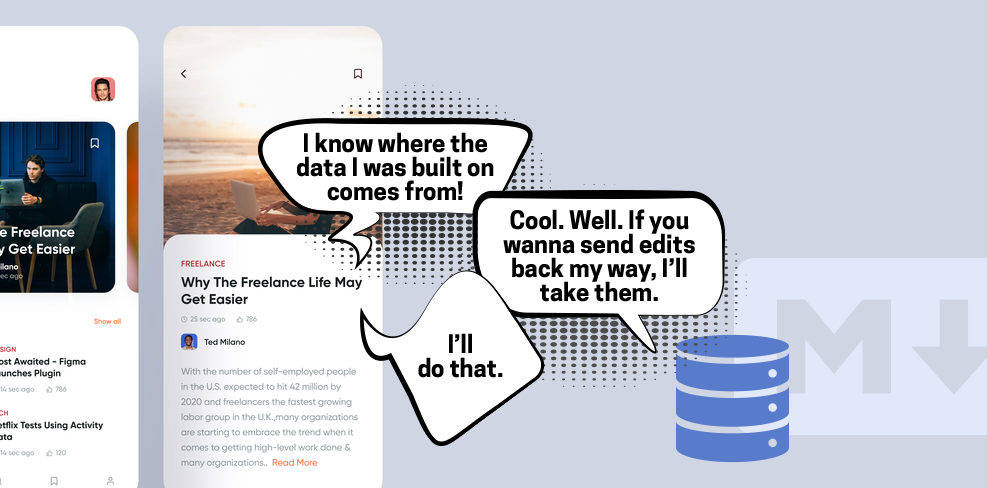I'm the founder of DaniWeb. Here's my about me
Ask Me Anything!! :)

Tips, Expertise, Articles and Advice from the Pro's for Your Website or Blog to Succeed
I'm the founder of DaniWeb. Here's my about me
Ask Me Anything!! :)
How confident are you in your brand’s SEO and content? Technology pushes content marketing to change year after year. What …
5 Content and SEO Trends that Will Dominate in 2023 Read More »
The post 5 Content and SEO Trends that Will Dominate in 2023 appeared first on .
10 Effective Tactics To Grow Your WordPress Blog 3x Faster Read More »
When a component lives in an environment where the data queries populating it live nearby, there is a pretty direct line between the visual component and the database where that exact content lives. That is opening up doors to site editing experiences that travel that line. We're starting to see CMSs that directly leverage that.

For example, if I build my site where I'm writing GraphQL queries with a <Query /> component to grab the data I need, it makes sense that I could change that data and put it back with a <Mutation />.
Take a look at TinaCMS, which is turning a lot of heads.
I just saw BodilessJS, which is up the same exact alley. They are trying to coin a new term here — where the content for a headless site comes from a headless CMS (via an API, as in, the content is elsewhere, rather than alongside the site itself) and a bodiless site has the content alongside the site in the same repo. Eh, I'm not huge on the word, but that kind of site probably does deserve some kind of classification.

Stackbit has a product in the works ("Stackbit Live") that is another one down this alley. Here's a screenshot from their interactive demo to give you an idea:

All of these seem to focus on React with a "probably other stuff later" vibe.
The (sponsored) video I did with Webflow last year had a CMS experience very much like this. It's incredible what their CMS is able to do because of that direct line between the visual component and the data behind it.

The desire for this kind of site experience has been around forever. I remember services that were like, "Just put our special class on your elements and FTP credentials," which would allow you to log into their site and edit the content on elements with a UI. It literally uploaded the changes back to static files on your server. I'm not sure any of those are around anymore as they went out of vogue for a while.
In a slightly more modern vein, Lea Verou's Mavo is like this. The only place you can edit content is from the front end.

I think there will always sites where this type of editing experience is highly desirable.
The post Component-Level CMSs appeared first on CSS-Tricks.
The Pen Settings area in the Pen Editor is a highly important bit of UI in CodePen! You'll see this area when doing anything from changing a preprocessor to changing the description of a Pen to turning on and off Auto-Updating.
We're also working on some new features that will ultimately be a part of Pen Settings, so we thought it was time to spruce up the design.

For the most part, things are under the same "tabs" as they used to be, with just a smidge of re-arranging. Things like Code Indentation and Indent Width are "Editor" concerns so we've broken that into its own tab, while Behavior is the remaining things concerning the behavior of the whole Pen. Also, Privacy has its own tab rather than being combined with Pen Details. But the most important little toggle, Public/Private, is available in the footer so can be changed from anywhere.

Note that you'll see different tabs depending on if you own the Pen or not (e.g. you can't change a Pen's title/description/tags if you don't own it, so we don't even show you that tab). You can change other settings as you play with the Pen, just note they won't actually save unless you fork the Pen for yourself.
Should be plenty friendly on the mobile editor:

High five to Klare who led up this one!
The post New Pen Settings Design appeared first on CodePen Blog.